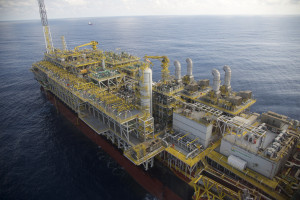Pre-salt Milestone for Petrobras
 On 14 December Petrobras and its partners celebrated a milestone: they have now produced one billion barrels of oil in the pre-salt layer. This total output was achieved just six years after the first production system came on stream in Santos Basin, in Lula field, and ten years after the first discovery, in 2006. In Brazil, the same output was only reached in Campos Basin after fifteen years of commercial production.
On 14 December Petrobras and its partners celebrated a milestone: they have now produced one billion barrels of oil in the pre-salt layer. This total output was achieved just six years after the first production system came on stream in Santos Basin, in Lula field, and ten years after the first discovery, in 2006. In Brazil, the same output was only reached in Campos Basin after fifteen years of commercial production.
To celebrate this result, Petrobras’ CEO, Pedro Parente, the company’s Executive Director for Exploration and Production, Solange Guedes, and the Executive Director for Production Development and Technology, Roberto Moro, visited FPSO Cidade de Itaguaí, an oil production and storage vessel installed in the Iracema Norte area, in the Santos Basin pre-salt, to take part in a commemorative ceremony. They paid tribute to some of the pioneers in pre-salt’s discovery and development, while recognising the contributions of thousands of other employees who made this result possible. “We are experiencing a turning point and we have no doubt of our immense capacity for achievements. I am very moved by the grandiosity of what is happening here today,” says Mr Parente. “Reaching one billion barrels in just six years in ultra-deep waters is a unique feat. It’s not just any company that could tell this kind of story,” says Mr Guedes.
Ten years after the first commercial discovery in the pre-salt, it has become one of the world’s most productive oil-producing regions. The area has higher average productivity indicators than the global average for offshore fields. Some wells are lifting 25,000 barrels per day, and productivity is up 30% from 2010. As a result, Petrobras has been able to interconnect fewer wells per production system. Pre-salt oil production is very important for the company’s financial recovery, representing large-scale production of excellent quality oil for refining, for lifting costs of less than US$8 per barrel. Today, thanks to the contributions of just eleven dedicated systems, nine in Santos Basin and two in Bacia de Campos, pre-salt already accounts for nearly 50% of the production led by Petrobras and around 35% of the company’s own output. Between 2017 and 2021, another sixteen large production systems will start up in the pre-salt.
Petrobras recently recorded another important result in the pre-salt. As of 15 November, the Route 2 gas pipeline had transported 2m3 billion of gas, just nine months after it started operating, in February of this year. Extending for 401 km, Route 2 is Brazil’s longest gas pipeline. It connects Petrobras’ pre-salt production systems in Santos Basin to the Cabiúnas Gas Treatment Terminal in Macaé, Rio de Janeiro. Every day, this pipeline network takes an average of 12m3 million of gas to the terminal. It accounts for 70% of the gas transported in the area.






